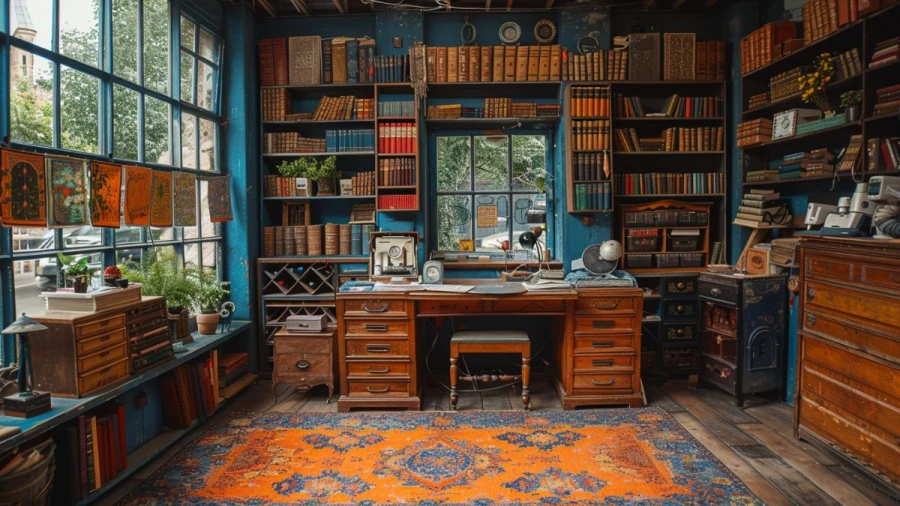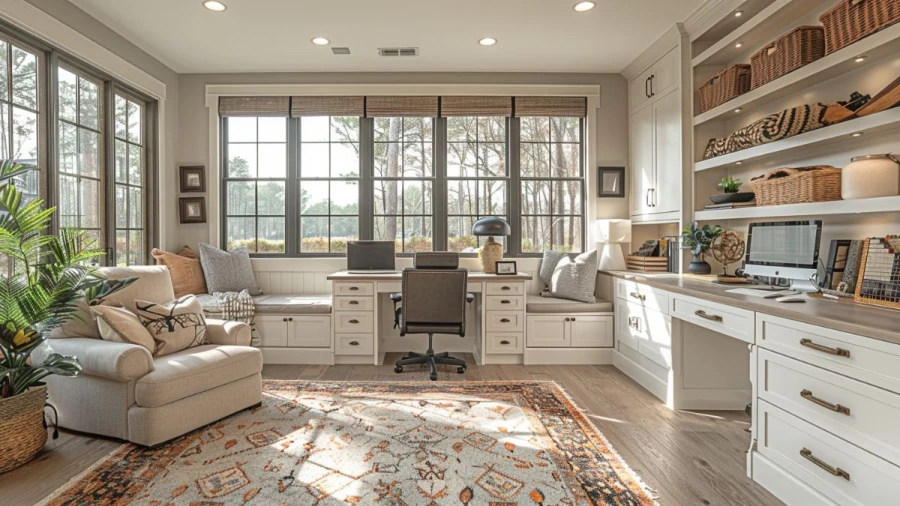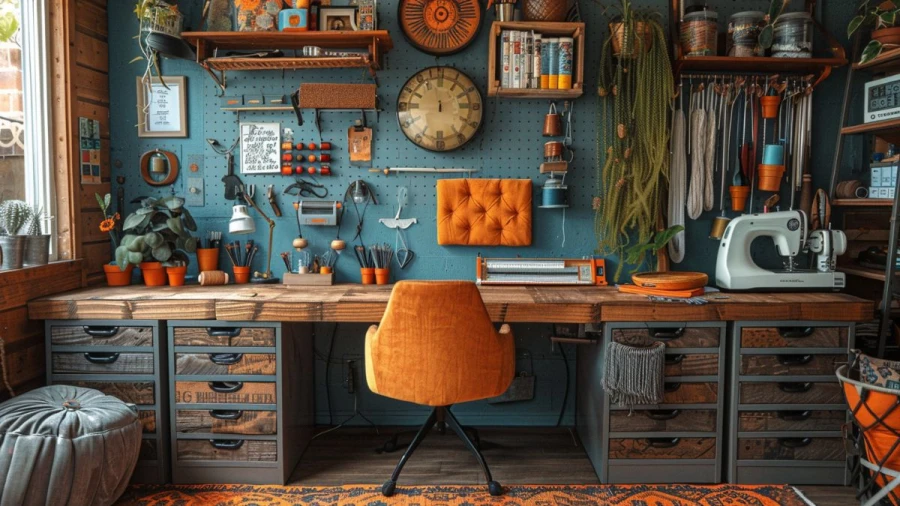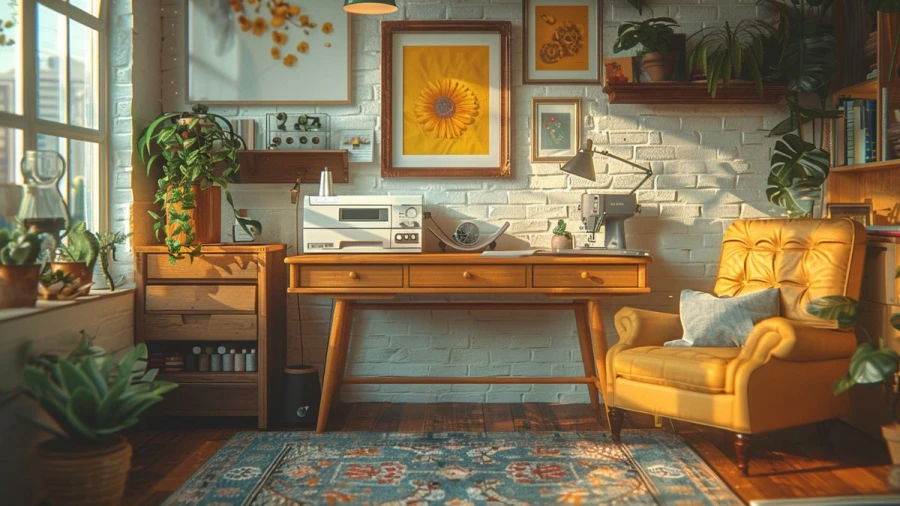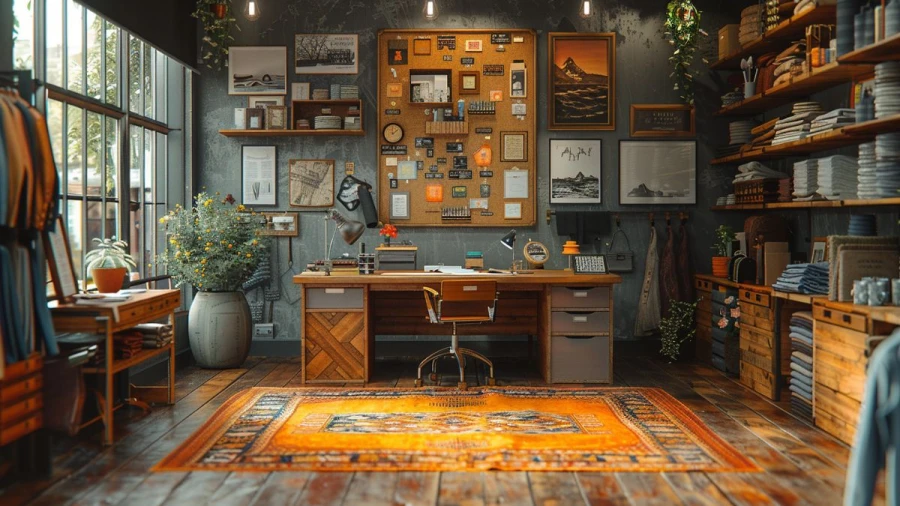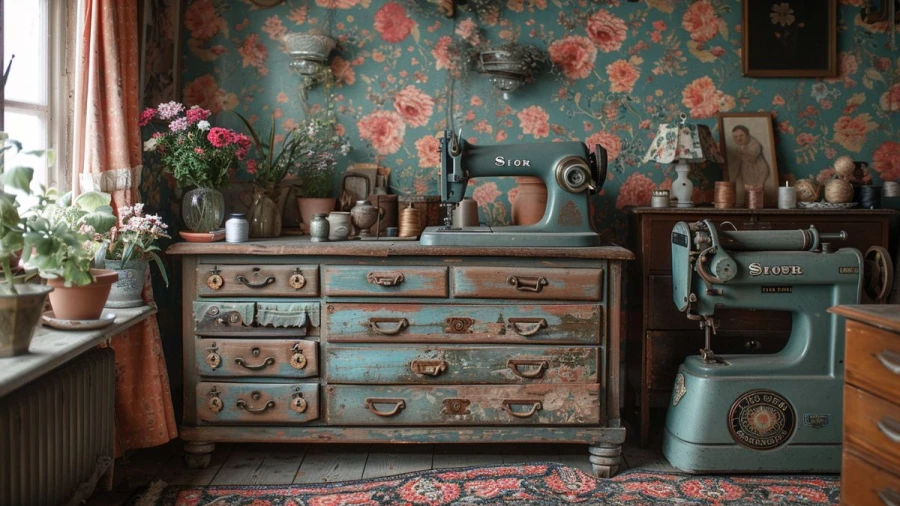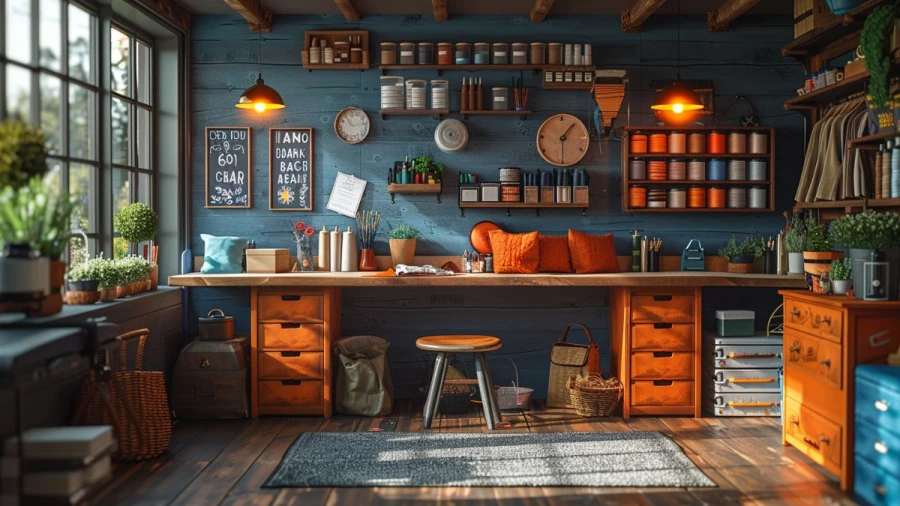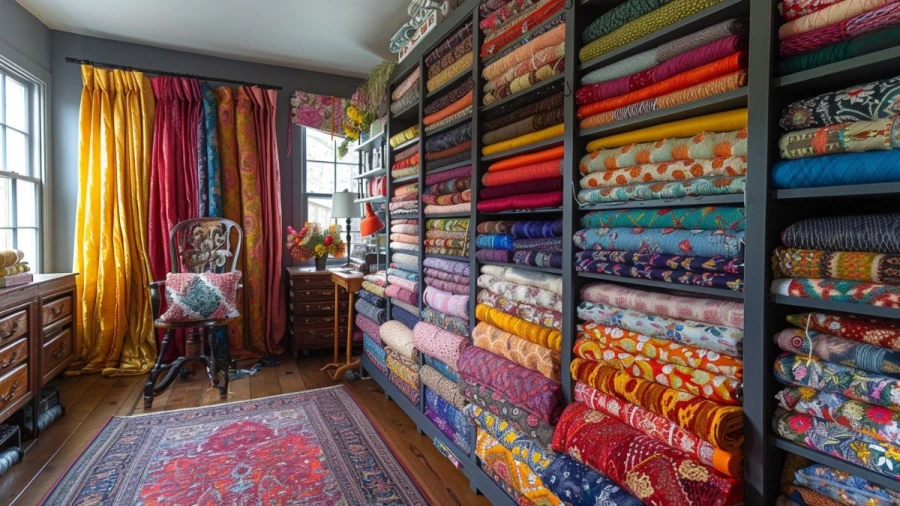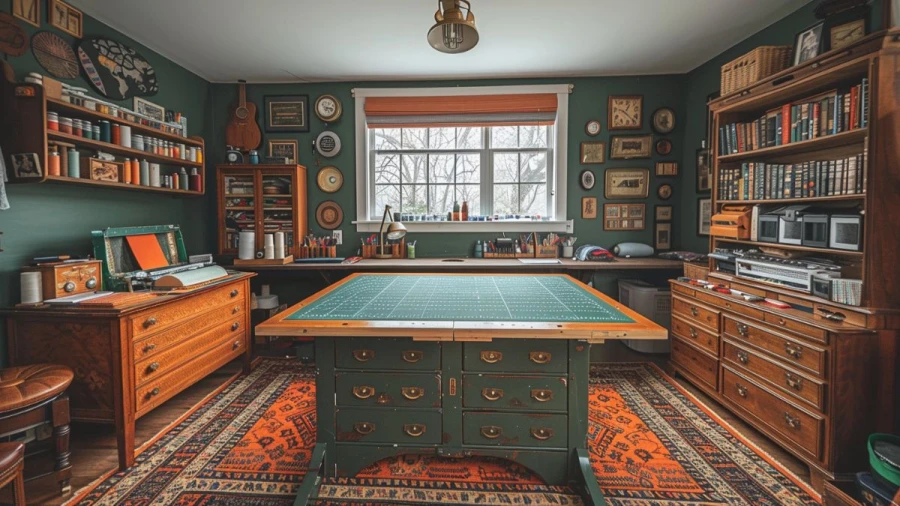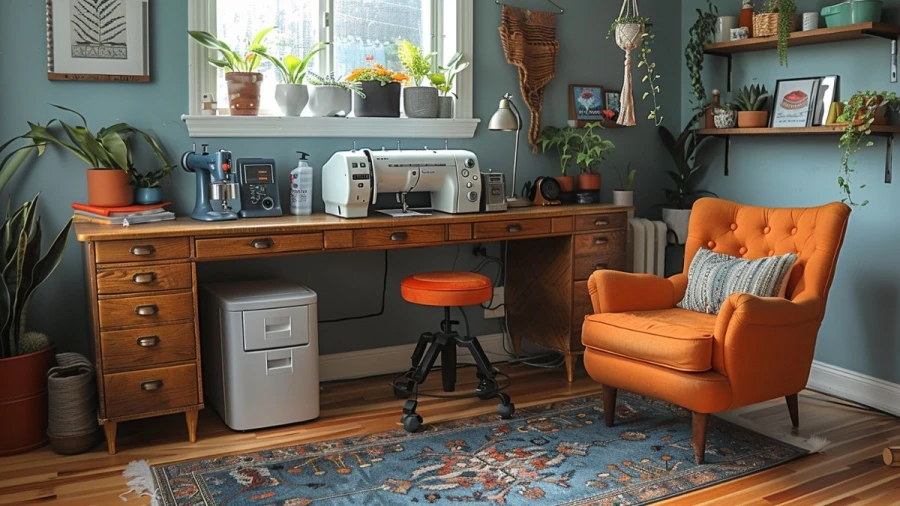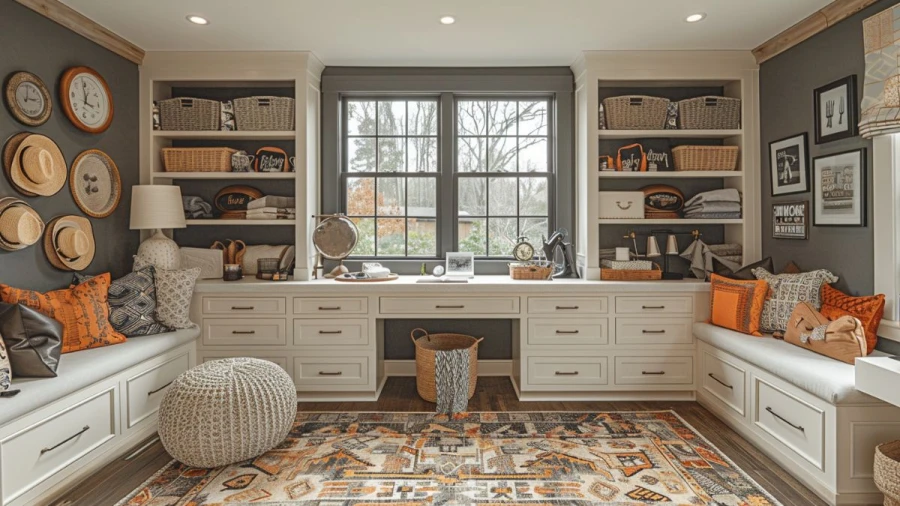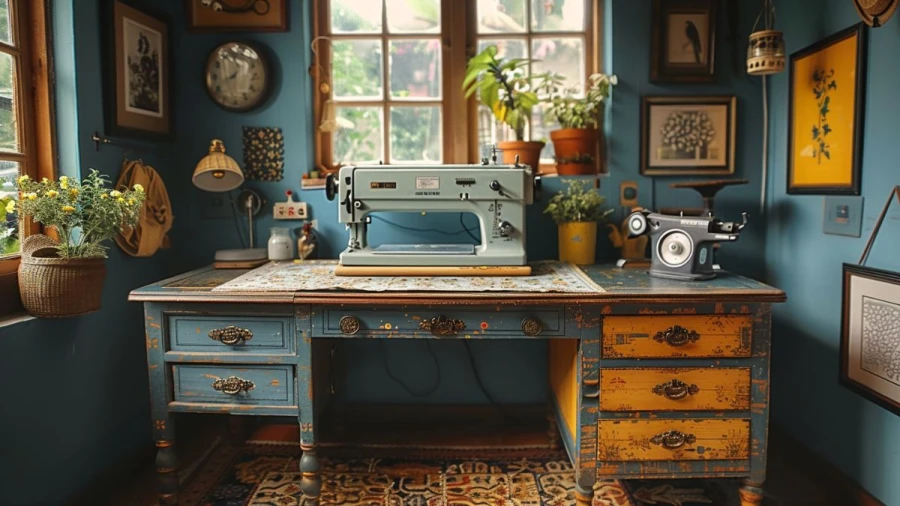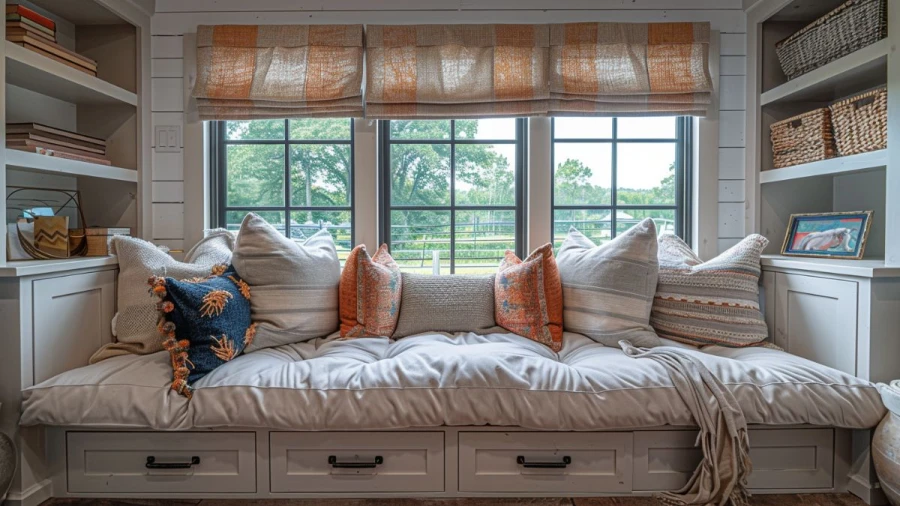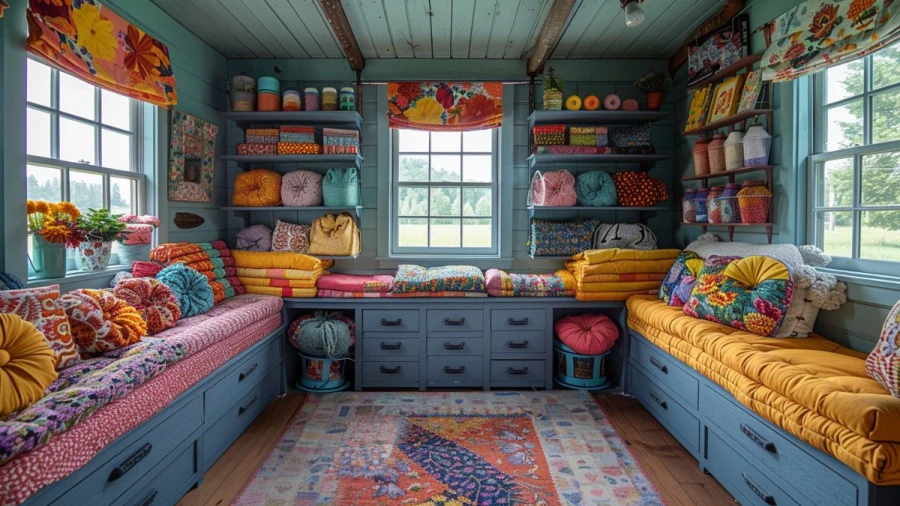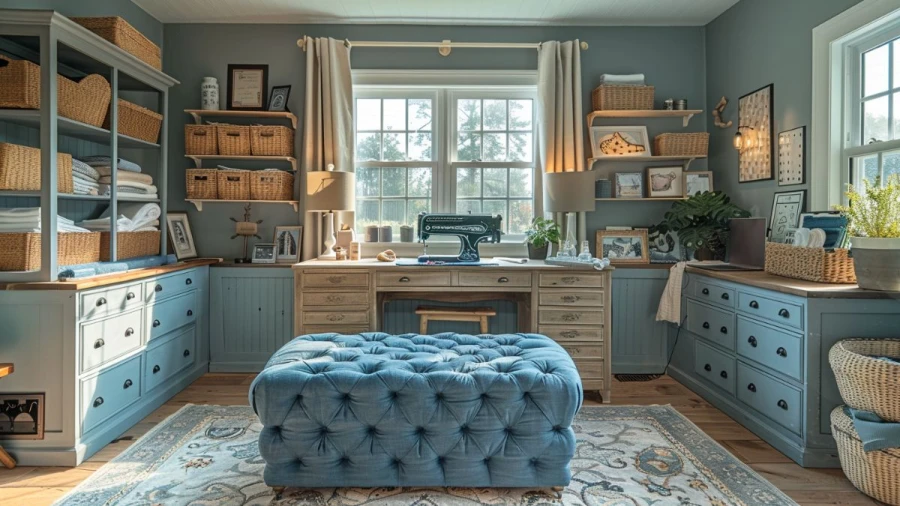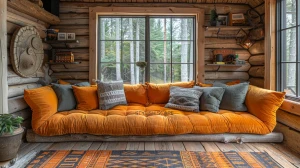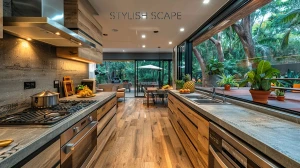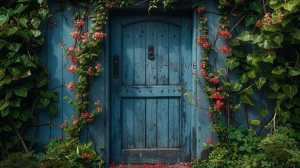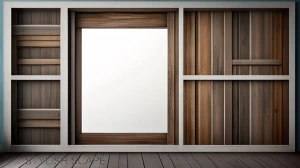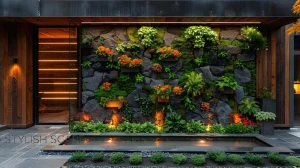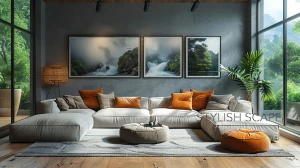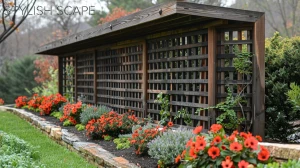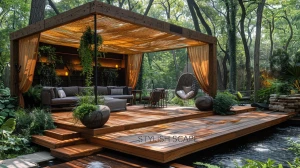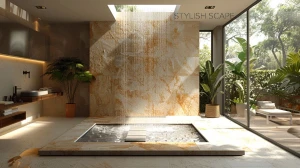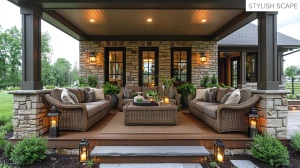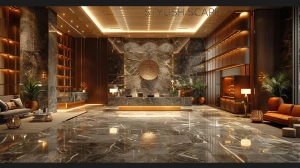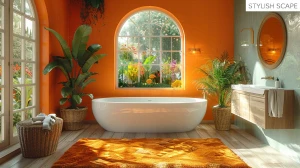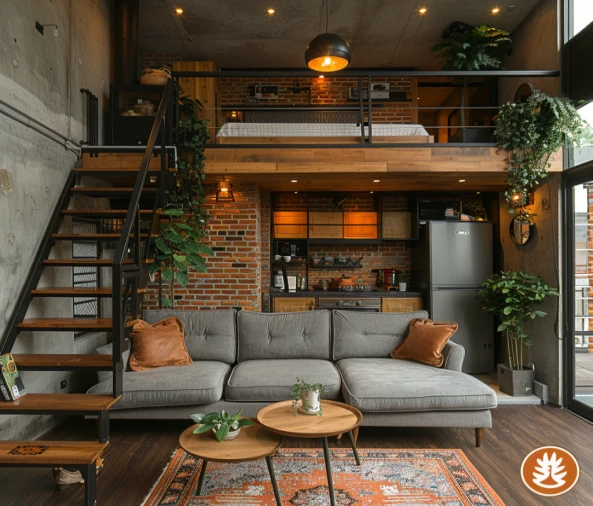
20 Creative Sewing Room Ideas to Inspire Your Crafting Space
Check out 20 creative Sewing Room Ideas to transform your crafting space into a functional and inspiring haven. These Sewing Room Ideas will help you design a sewing room that enhances your creativity and organization.
by Maivizhi A
Updated Aug 08, 2024
On This Page
- Sewing Room Ideas
- Sewing Sanctuary
- Sewing Studio Organization
- Sewing Corner Nook
- Modern Sewing Space
- Sewing Room with Island
- Vintage Sewing Room
- Sewing and Crafting Hub
- Sewing Room with Wall Art
- Bright and Breezy Sewing Room
- Sewing Room with Floor-to-Ceiling Storage
- Sewing Room with Cutting Table
- Compact Sewing Space
- Sewing Room with Custom Cabinets
- Sewing Room with Pegboard
- Sewing Room with Adjustable Lighting
- Eco-Friendly Sewing Room
- Sewing Room with Fabric Wall
- Sewing Room with Window Seat
- Colorful Sewing Room
- Sewing Room with Multi-Functional Furniture
- How Do You Organize Sewing Supplies in a Small Room?
Sewing Room Ideas
Explore our guide on making your sewing room a great place to work! Whether you are an experienced sewer or just starting out, having a neat and inspiring sewing room can make a big difference. This guide will show you how to use your space wisely and make it look nice.
We will cover everything from smart storage ideas to arranging your workspace in a way that works best for you. You will learn how to organize shelves and cabinets, pick the right furniture, and choose good lighting for your sewing projects. We’ll also share decorating tips to make your sewing room feel like your own special place.
By following this guide, you will get practical advice and creative ideas to turn your sewing room into a well-organized and enjoyable space. Get ready to improve your sewing area and have a better time crafting!
Sewing Sanctuary
A Sewing Sanctuary is a special, relaxing space dedicated to sewing. It’s a place where you can focus on your projects without distractions. To create this space, start by choosing a quiet area in your home. Set up a comfortable chair and a sturdy sewing table. Keep your sewing supplies organized with shelves, drawers, or bins. Add good lighting to see your work clearly.
Personalize the space with decorations that inspire you, like fabric swatches or sewing-themed artwork. You might also include a cozy blanket or a small plant to make it more inviting. The idea is to make this area a peaceful retreat where you can enjoy your sewing time and feel creative.
Sewing Studio Organization
Sewing Studio Organization focuses on keeping your sewing space tidy and efficient. Start by arranging your tools and materials so you can easily find what you need. Use clear storage containers for fabrics, threads, and notions, labeling each container for quick access. A pegboard or wall-mounted shelves can help keep tools like scissors and rulers within reach.
Keep your sewing machine and work area clean by having designated spots for everything. Consider adding a large cutting mat for fabric and a comfortable chair for long sewing sessions. Regularly clean and declutter to maintain an organized space. A well-organized studio helps you work more efficiently and reduces stress.
Sewing Corner Nook
A Sewing Corner Nook is a small, dedicated area in your home for sewing. It’s perfect if you don’t have a lot of space. Choose a corner in a room, and set up a compact sewing table or desk. Add a small shelf or cabinet for storing fabrics and sewing tools. Use a chair that fits comfortably in the corner and is easy to move. Good lighting is important, so place a lamp or use natural light if possible.
Keep the nook clutter-free by using space-saving storage solutions, like hanging organizers or stackable bins. Decorate the nook with colors and items that make you happy. This cozy corner allows you to sew comfortably and makes good use of limited space.
Modern Sewing Space
A modern sewing space is designed to be clean, bright, and functional. It usually features sleek, minimalist furniture and plenty of natural light. You might find a large, sturdy sewing table or desk where you can easily work on your projects. Storage solutions are often built-in, like shelves or cabinets, to keep everything organized and within reach.
The color scheme is typically neutral with pops of color for interest, and there may be a mix of modern materials like metal and glass. This style aims to create a calm, efficient workspace where you can focus on your sewing tasks without distraction.
Sewing Room with Island
A sewing room with an island is designed with a central, spacious table in the middle of the room. This island acts as the main work area, offering plenty of space for cutting fabric, sewing, and organizing tools. It often includes built-in storage drawers or shelves to keep supplies handy.
The island allows for easy movement around it, making it convenient to reach everything you need. This setup is great for those who like to spread out their materials and work on multiple tasks at once. It’s also useful for collaborative sewing projects or for teaching others.
Vintage Sewing Room
A vintage sewing room is styled to look like it’s from the past, with classic or retro furniture and décor. You might see an old-fashioned sewing machine, like a Singer with a treadle, and antique dressers or cabinets for storage. The room is often decorated with patterns and colors from past decades, like floral wallpaper or lace curtains.
Vintage sewing rooms usually have a cozy, nostalgic feel, with items that reflect the history of sewing and craftsmanship. This style brings a sense of charm and history to the sewing process, making it both functional and aesthetically pleasing.
Sewing and Crafting Hub
A Sewing and Crafting Hub is a dedicated space for all your sewing and craft activities. It's designed to be a practical and organized area where you can easily access your materials and tools. Think of it as a workshop where everything you need for sewing and crafting is within reach.
You might have a large table for cutting fabrics, plenty of storage for supplies like thread and buttons, and a comfortable chair for long sewing sessions. Good lighting is important so you can see your work clearly. You can also add personal touches, like inspirational decorations or a bulletin board for ideas. This setup helps keep your projects neat and ensures you have a creative space ready for any crafting activity.
Sewing Room with Wall Art
A Sewing Room with Wall Art is a creative and inspiring space where your sewing room is decorated with artistic elements. Wall art can include anything from colorful paintings and prints to sewing-related quotes and designs. This decor not only makes the room visually appealing but also adds a personal touch to your sewing space.
You can choose art that reflects your interests, such as vintage sewing advertisements or fabric patterns. The art on the walls can make your sewing room feel more inviting and encourage creativity. It’s a great way to transform a functional space into a place where you enjoy spending time and feel inspired to work on your sewing projects.
Bright and Breezy Sewing Room
A Bright and Breezy Sewing Room is all about creating a cheerful and airy environment for sewing. To achieve this, focus on good lighting and light colors. Large windows or bright light fixtures help ensure the room is well-lit so you can see your work clearly. Light, neutral colors on the walls and furniture can make the space feel open and fresh.
Adding breezy curtains or blinds allows natural light to filter in, making the room feel more relaxed and comfortable. Plants and simple decorations can also enhance the airy feeling. This type of sewing room makes the sewing experience enjoyable and helps you stay focused on your creative projects.
Sewing Room with Floor-to-Ceiling Storage
A sewing room with floor-to-ceiling storage uses every bit of wall space to keep things organized. Tall shelves or cabinets line the walls from the floor to the ceiling, creating lots of storage. This setup helps keep all your sewing supplies, like fabrics, threads, and patterns, neatly arranged and easy to find.
You can also use this space for storing sewing machines and tools. The vertical storage makes good use of space in smaller rooms and keeps the sewing area tidy. By having everything within reach, you save time and effort, making your sewing projects more enjoyable and less stressful.
Sewing Room with Cutting Table
A sewing room with a cutting table is designed to make fabric cutting easier. The cutting table is a large, flat surface where you can lay out your fabric and patterns. It often has built-in markings for measuring and cutting straight lines. This type of setup allows you to cut fabric accurately and comfortably.
With ample space to spread out your materials, it reduces the chances of mistakes and helps keep your work organized. The cutting table is usually adjustable in height, so you can work while standing or sitting, depending on your preference.
Compact Sewing Space
A compact sewing space is a small, efficient area designed for sewing in tight quarters. It typically includes a small sewing table or desk, a chair, and basic storage solutions like wall-mounted shelves or small bins. This setup maximizes the use of limited space, making it perfect for apartments or small rooms.
You can keep your sewing machine, fabric, and tools within arm's reach. Despite its size, a well-organized compact sewing space allows you to sew comfortably and efficiently. Clever storage solutions, like foldable or stackable items, help keep the area tidy and functional.
Sewing Room with Custom Cabinets
A sewing room with custom cabinets is designed to fit your specific needs and space. Custom cabinets are built to match the exact size and layout of your room, allowing you to maximize storage and organization. They can include features like drawers for small sewing tools, shelves for fabric, and a workspace that suits your sewing machine and projects.
By choosing custom cabinets, you can create a neat and efficient sewing area, making it easy to find everything you need. The design can be tailored to your preferences, ensuring that the sewing room is both functional and stylish. This personalized approach helps keep your sewing supplies organized and your workspace clutter-free.
Sewing Room with Pegboard
A sewing room with a pegboard is a practical way to keep your tools and supplies visible and easily accessible. Pegboards are wall-mounted panels with holes where you can hang hooks, shelves, and containers. By using a pegboard, you can arrange your sewing tools, such as scissors, thread spools, and rulers, in a way that makes them easy to find and reach.
This setup helps to keep your workspace tidy and allows you to customize the layout based on what you use most often. It’s a flexible and efficient solution for organizing your sewing supplies and maintaining an orderly sewing room.
Sewing Room with Adjustable Lighting
A sewing room with adjustable lighting ensures that you have the right amount of light for different tasks. Adjustable lighting allows you to change the brightness and direction of light based on what you're working on. For detailed sewing work, bright, focused lighting can reduce eye strain and help you see fabric and stitches clearly.
For general tasks or relaxing, you can dim the lights to create a comfortable environment. This type of lighting setup can include desk lamps with adjustable arms, overhead lights with dimmers, and light fixtures that can be angled. Having adjustable lighting helps improve your sewing experience by providing optimal visibility and comfort.
Eco-Friendly Sewing Room
An eco-friendly sewing room focuses on being kind to the environment. Start by using sustainable materials, like organic cotton or recycled fabrics, for your projects. Choose eco-friendly paints and finishes for the room. Incorporate energy-efficient lighting, such as LED bulbs, to save energy. Reuse and repurpose items wherever possible—old furniture can be given a new life with a fresh coat of paint or new fabric.
You can also use fabric scraps to create new items instead of throwing them away. Make sure to properly recycle or donate unwanted materials. Adding plants to your sewing room not only brightens up the space but also helps clean the air. This approach helps reduce waste and supports a healthier planet.
Sewing Room with Fabric Wall
A sewing room with a fabric wall uses a wall as a creative storage solution. Cover one wall with colorful fabric panels or a fabric-covered bulletin board. This serves as both decoration and storage, making it easy to see and access your fabric stash. You can hang different types of fabrics in a visually appealing way.
Use this wall to organize swatches, patterns, or inspirational items, making your sewing space more functional and stylish. The fabric wall can also double as a design board where you pin your project ideas or fabric combinations. This setup helps keep your sewing materials tidy and within reach, and it adds a unique, personal touch to your room.
Sewing Room with Window Seat
A sewing room with a window seat is a cozy and functional addition. Position a comfortable seat by the window to create a relaxing spot where you can take breaks, read, or plan your sewing projects. This area can also provide natural light, which is beneficial for sewing and crafting.
Add storage under the window seat for fabric, patterns, or sewing tools, keeping them easily accessible but out of sight. Use cushions or a soft throw to make the seat more inviting. This setup not only makes the room more comfortable but also enhances the overall aesthetic by incorporating a functional piece of furniture that makes the most of the natural light and view from the window.
Colorful Sewing Room
A colorful sewing room is a space designed to inspire creativity and joy. Bright colors can make the room feel lively and energizing. You can use different colors for walls, fabrics, and accessories. For example, paint the walls in a soft pastel or a bold color that you love. Use colorful storage boxes and sewing tools to keep everything organized and fun.
Brightly patterned fabric can be displayed on shelves or used for cushions and curtains. Adding colorful artwork or a vibrant rug can complete the look. This kind of room is great for making sewing enjoyable and encouraging you to try new projects.
Sewing Room with Multi-Functional Furniture
A sewing room with multi-functional furniture is designed to save space and increase efficiency. Multi-functional furniture includes items that serve more than one purpose. For example, a sewing table with built-in storage drawers can keep your supplies organized. A folding table can be used for cutting fabric and then easily stored away when not in use. An ottoman with storage inside can hold fabric scraps and provide extra seating.
Using furniture that can adapt to different needs helps keep the room tidy and makes it easier to work on various sewing projects. This setup is perfect for small spaces or for those who want to make the most of their sewing area.
How Do You Organize Sewing Supplies in a Small Room?
Organizing sewing supplies in a small room can be a challenge, but with some creative solutions, you can maximize your space. Here are some tips:
Use Vertical Space
- Shelving Units: Install wall-mounted shelves to store fabrics, threads, and patterns. You can use stackable bins or baskets on these shelves for smaller items.
- Pegboards: Mount a pegboard on the wall to hang tools, scissors, and other frequently used items.
Utilize Drawer Organizers
- Drawer Dividers: Use dividers or small bins in drawers to keep thread, needles, and other notions separated and easily accessible.
- Small Containers: Store buttons, beads, and other tiny supplies in small clear containers or tackle boxes.
Furniture with Storage
- Sewing Tables with Drawers: Opt for a sewing table with built-in drawers or shelves to keep your supplies organized.
- Ottomans or Storage Benches: These can provide additional storage space and seating.
Clear Storage Solutions
- Bins and Containers: Use clear bins or jars to store sewing supplies. This way, you can easily see what’s inside without opening them.
- Label Everything: Label bins, jars, and containers to quickly identify the contents.
Rolling Carts
- Mobile Storage: A rolling cart can be moved around and used to keep frequently used supplies close by. It can also be tucked away when not in use.
Over-the-Door Organizers
- Hanging Storage: Utilize the back of a door for hanging organizers that can hold thread spools, fabric scraps, or small tools.
Fabric Storage Solutions
- Fabric Rolls: Store fabrics on a hanging rod or in clear bins to prevent wrinkling and make it easier to see your collection.
- Folding Methods: Fold fabric neatly and store it in bins or on shelves.
Labeling
- Use Labels: Label all your storage containers, drawers, and shelves to make it easier to find what you need quickly.
By using these techniques, you can keep your sewing space organized and efficient, even in a small room
